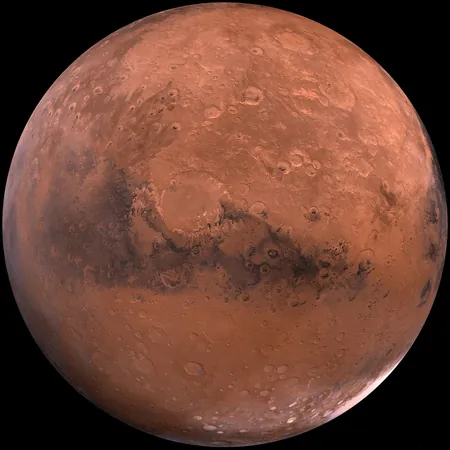
Unraveling the Mystery: 13 Proteins Linked to Brain Aging Peaking at 57, 70, and 78!
2024-12-09
Author: Emily
Summary of Findings
A groundbreaking study has unveiled 13 proteins that may play a pivotal role in the aging of our brains, raising hopes for potential anti-aging treatments. Researchers are optimistic that understanding these proteins could lead to breakthroughs for age-related diseases like dementia — but they urge caution, emphasizing the need for further exploration.
Study Overview
In a pioneering effort, scientists analyzed MRI brain scans from nearly 11,000 individuals aged 45 to 82, using advanced artificial intelligence to gauge each participant's 'brain age gap' — a compelling measure of how their brain health compares against their actual age. With sophisticated imaging techniques, they pinpointed specific physiological features, such as brain volume and surface area, thus charting the extent of accelerated brain aging.
Protein Analysis
Alongside the imaging data, the researchers examined the blood concentrations of approximately 3,000 proteins from nearly 5,000 participants. The connection between blood and brain health suggests that fluctuations in these protein levels may mirror changes occurring within the brain itself.
Key Findings
The findings weren’t just intriguing; they were striking. Thirteen proteins were consistently linked to biological brain age — and their behavior suggested an urgent narrative of decline. Proteins associated with aging-related stress and inflammation surged as biological brain age increased, while those vital for maintaining brain function — including proteins fostering cellular regeneration — saw decreasing levels.
The Role of Brevican
Among these, one protein taking center stage was brevican. This particular protein, that facilitates communication between neurons, exhibited a significant drop in concentration as individuals aged. Alarmingly, this decline correlates strongly with prevalent conditions such as dementia and stroke, suggesting that brevican could provide a reliable marker for neurodegenerative diseases.
Peaks of Protein Concentration
An intriguing aspect of the study revealed that the concentrations of these 13 proteins peaked at ages 57, 70, and 78, potentially indicating unique 'waves' of brain aging. These peaks could serve as critical reference points for targeting future anti-aging therapies, as suggested by the paper published in the journal Nature Aging.
Expert Opinions and Limitations
Despite the exciting implications, experts urge caution. Mark Mattson, an adjunct professor at the Johns Hopkins School of Medicine, expressed skepticism about the unexpected findings. He notes that they contradict the commonly accepted view of brain aging as a gradual decline, urging for more robust studies to deepen our understanding.
Moreover, the researchers acknowledged significant limitations in their study — most notably the demographic homogeneity of their participants, predominantly of European descent, sourced from the U.K. Biobank database. This raises pressing questions about whether similar protein fluctuations occur across diverse racial and ethnic backgrounds, and whether these patterns hold true throughout an individual’s lifespan.
Future Directions
And while these discoveries offer tantalizing insights into the mysteries of brain aging, the origin of these 13 proteins within the brain remains a puzzle yet to be solved. Until researchers can pin down where these proteins are produced and their specific roles in the aging process, the quest to unlock effective anti-aging strategies continues.
The journey to understanding brain aging has only just begun, and as researchers delve deeper, the hope remains that these proteins could one day become the focal point of innovative treatments. Could these 13 proteins hold the key to not just adding years to our lives but also enhancing the quality of those years? Only time will tell!









 Brasil (PT)
Brasil (PT)
 Canada (EN)
Canada (EN)
 Chile (ES)
Chile (ES)
 España (ES)
España (ES)
 France (FR)
France (FR)
 Hong Kong (EN)
Hong Kong (EN)
 Italia (IT)
Italia (IT)
 日本 (JA)
日本 (JA)
 Magyarország (HU)
Magyarország (HU)
 Norge (NO)
Norge (NO)
 Polska (PL)
Polska (PL)
 Schweiz (DE)
Schweiz (DE)
 Singapore (EN)
Singapore (EN)
 Sverige (SV)
Sverige (SV)
 Suomi (FI)
Suomi (FI)
 Türkiye (TR)
Türkiye (TR)